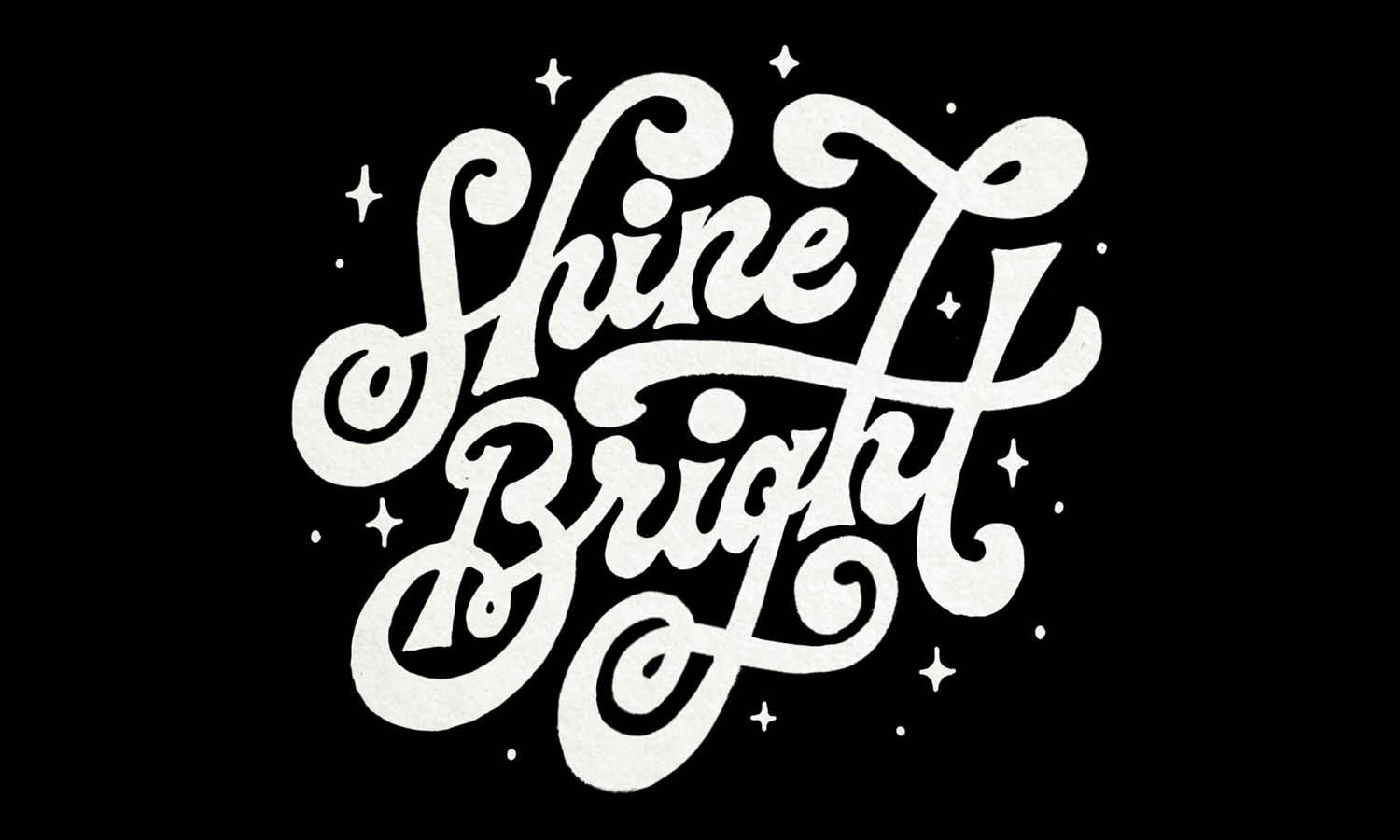Discovering The Benefits of Sans-Serif Fonts for Logo Designs

Source: Darren Maen, Startup Visual Transformation: Branding & Web Design, Behance, https://www.behance.net/gallery/169568175/Startup-Visual-Transformation-Branding-Web-Design
In the vast landscape of graphic design, the choice of typography plays a pivotal role in shaping a brand's identity. Among the myriad of typographic styles, sans-serif fonts have emerged as a favorite for logo designs across various industries. Known for their clean and contemporary appearance, sans-serif fonts strip away the ornate flairs of their serif counterparts, offering a crisp, clear line that is easy on the eyes. This makes them not only aesthetically pleasing but also highly functional, ensuring that logos remain impactful and legible across all forms of media—from digital screens to large-scale printouts.
As businesses seek to carve out a distinctive presence in a competitive market, the clarity and modernity of sans-serif fonts can be powerful tools. This article delves into the numerous advantages these fonts offer, demonstrating why they are an excellent choice for any logo designer aiming to create a memorable and effective brand symbol. Through an exploration of their versatility, adaptability, and sheer visual appeal, we will uncover how sans-serif fonts contribute to successful logo designs.
Clarity and Legibility
One of the most compelling reasons to use sans-serif fonts in logo designs is their outstanding clarity and legibility. Sans-serif fonts, characterized by their absence of decorative strokes or serifs at the ends of letters, offer a streamlined and straightforward appearance. This simplicity ensures that logos are easily readable, even when viewed from a distance or in smaller sizes. It's essential for brands to be immediately recognizable, and the unambiguous nature of sans-serif fonts facilitates quick identification and understanding. These fonts display exceptionally well across various digital platforms and physical materials, maintaining their integrity without becoming muddled or losing detail.
The legibility of sans-serif fonts also enhances user experience, making it easier for customers to recall and engage with the brand. In environments where viewers only have a fleeting moment to register a logo, the clarity of sans-serif fonts can make a significant impact. Their adaptability across different contexts and mediums makes sans-serif fonts a versatile choice for designers aiming to create a clean, modern look that communicates a brand's message effectively.
Modern Appeal
Sans-serif fonts are synonymous with modern design, often chosen for their sleek, contemporary feel that aligns perfectly with innovative and forward-thinking brands. The clean lines and absence of serifs give these fonts a minimalist yet striking appearance, making them ideal for companies looking to project a youthful and current image. This aesthetic aligns well with digital-centric businesses where a fresh, uncluttered look is paramount. Furthermore, the simplicity of sans-serif fonts lends itself to various artistic manipulations, allowing designers to experiment with spacing, alignment, and scale without compromising the typeface's readability.
This flexibility is a boon for creating unique logo designs that stand out in a crowded marketplace. The modern appeal of sans-serif fonts is not just about their look; it also reflects a brand's ethos—signaling a company that is in tune with contemporary trends and technologies. Utilizing sans-serif fonts can therefore be a strategic decision that connects a brand with its target audience, particularly with younger demographics who value simplicity and clarity in design. As trends in typography evolve, the enduring appeal of sans-serif fonts in logo designs remains a testament to their ability to blend aesthetics with practicality.
Strong First Impressions
The initial moment a potential customer encounters a brand’s logo is crucial, and sans-serif fonts excel in making that encounter memorable. The clean, unembellished lines of sans-serif typefaces contribute to creating a strong, clear visual statement that can make a powerful first impression. This type of font removes any potential distractions caused by extra flourishes, allowing the brand’s message to come through loud and clear. In the fast-paced world of consumer interactions, where attention spans are short, the ability of sans-serif fonts to convey simplicity and immediacy helps logos to stand out and be easily recognized.
This visual clarity is especially important in digital contexts, where a logo must pop on small screens and amidst a sea of other visual stimuli. Logos designed with sans-serif fonts can assert a sense of authority and reliability, qualities that customers tend to remember and appreciate. For businesses aiming to establish a strong brand identity from the first glance, incorporating a sans-serif font into their logo design is a strategic choice that combines aesthetic appeal with functional effectiveness.

Source: Wessam Eltantawy, Vaxter Brand Identity - Architectural Studio, Behance, https://www.behance.net/gallery/162175837/Vaxter-Architectural-Studio
Cross-Industry Appeal
Sans-serif fonts boast a remarkable flexibility that makes them suitable for a wide range of industries. From tech startups to fashion brands, these fonts can adapt to convey the unique traits and ethos of any sector. Their clean and modern appearance lends an air of sophistication and professionalism, traits that are valued across commercial landscapes. This universality is one of the reasons why sans-serif fonts are so prevalent in corporate branding—it’s hard to go wrong with a typeface that projects clarity and modernity. Whether it’s for a healthcare provider seeking to communicate trust and care or a tech company emphasizing innovation and efficiency, sans-serif fonts can meet the diverse needs of these sectors without compromising on style or readability.
Their broad appeal also extends to global markets, where simplicity in design can transcend language and cultural barriers, making the logo more accessible to international audiences. The adaptability of sans-serif fonts is thus not only a design choice but a strategic business decision that can enhance brand perception in multiple industries worldwide.
Versatility Across Platforms
Sans-serif fonts are a cornerstone of logo design primarily due to their versatility across various platforms and media. These fonts are inherently clean and scalable, ensuring that logos retain their legibility and impact whether displayed on the tiny screen of a smartphone or the large facade of a billboard. This trait is particularly valuable in today’s multi-platform world, where a logo must perform consistently across digital and physical spaces. Sans-serif fonts excel in digital environments, where their clear and straightforward lines render sharply on screens, enhancing user interfaces and improving readability.
The absence of serifs also means there is less risk of detail loss when the font size is reduced for mobile applications or social media icons. This adaptability extends to print media as well, where sans-serif fonts can be bold and impactful without the risk of ink bleed, a common issue with more intricate typefaces. For businesses aiming for a cohesive brand identity across diverse advertising channels, choosing a sans-serif font for their logo design ensures clarity and recognition, making it a practical choice for modern branding strategies.
Wide Variety
The diversity of sans-serif fonts available to designers is expansive, offering a plethora of stylistic options to tailor a logo to the specific tone and personality of a brand. From the geometric precision of fonts like Futura to the more rounded, friendly lines of Proxima Nova, each sans-serif typeface carries its own unique characteristics. This wide variety ensures that designers can select a font that not only aligns with the brand’s identity but also stands out in a competitive market.
The variety of weights and styles within each sans-serif family further allows for fine-tuning and customization, enabling designers to create a distinct look that can effectively convey the brand’s message. Whether the goal is to evoke sophistication, reliability, or innovation, there is likely a sans-serif font that meets the need. This broad selection makes sans-serif fonts invaluable in logo design, providing the flexibility to adapt to evolving brand strategies and market conditions while maintaining consistency and integrity in the brand’s visual representation.
Contemporary Typography Trends
Sans-serif fonts continue to dominate contemporary typography trends, especially in logo design. Their popularity stems from their ability to adapt to the clean, minimalist designs favored by today's digital-first brands. As the digital landscape evolves, so does the demand for fonts that are not only functional but also highly legible across devices and resolutions. Sans-serif fonts meet this demand perfectly, offering sleek, straightforward lines that resonate with modern aesthetics. In recent years, we have seen a surge in the creation of custom sans-serif typefaces designed specifically for brand identities, emphasizing uniqueness and brand differentiation.
Moreover, current trends highlight the blending of sans-serif fonts with subtle quirks or variations, adding character while maintaining the fonts’ inherent simplicity and readability. This approach aligns with a broader movement towards more personalized, tailored branding efforts. The versatility and modern look of sans-serif fonts make them a go-to choice for designers looking to create dynamic, impactful logos that speak to contemporary audiences. There is a wide range of fonts that you can use in your graphic design projects. Check out this top notch font generators if you are looking for unique and outstanding fonts.

Source: Sofia --, Moretti Brand Design, Behance, https://www.behance.net/gallery/168353349/Moretti-Brand-design
Global Appeal
The global appeal of sans-serif fonts in logo designs cannot be overstated. Their straightforward, clean design transcends cultural and linguistic barriers, making them an excellent choice for international brands aiming for universal recognizability. Unlike serif fonts, which may carry historical or cultural connotations specific to certain regions, sans-serif fonts offer a neutral appearance that is less likely to be misinterpreted or feel out of place in different markets. This universality is crucial for brands that operate on a global scale, as it ensures that their identity remains consistent and clear, regardless of where the logo is displayed.
Additionally, the simplicity of sans-serif fonts aids in maintaining legibility and effectiveness in diverse languages, including those with non-Latin scripts. This makes them particularly valuable in multilingual branding, where a single logo must work across various language systems. As companies continue to expand their reach internationally, the clarity, simplicity, and neutral character of sans-serif fonts make them a strategic choice for creating a cohesive, accessible brand identity worldwide.
Emotional Flexibility
Despite their simple appearance, sans-serif fonts offer substantial emotional flexibility, making them an invaluable tool for logo designers. This type of font can easily adapt to convey a wide range of emotions and tones, depending on the context and the specific characteristics of the typeface chosen. For instance, a bold and tightly spaced sans-serif can project strength and reliability, while a lighter, more rounded sans-serif might evoke approachability and friendliness. This versatility allows brands to express different facets of their personality through typography alone, enhancing the emotional connection with their audience.
The absence of serifs simplifies the visual impact, focusing the viewer’s attention on the message rather than the ornamentation of the text. This can make the communication more direct and emotionally engaging. Whether a brand aims to appear innovative, dependable, playful, or serious, sans-serif fonts can be tailored to embody these attributes effectively, ensuring that the logo not only represents the company visually but also resonates emotionally with its target audience.
Ease of Combination
One of the standout features of sans-serif fonts in logo design is their ease of combination with other typographic styles and graphic elements. This adaptability makes sans-serif fonts particularly appealing for designers who wish to create layered, textured, or dynamic logos. Their clean lines and straightforward forms do not clash with other styles, whether they are paired with more decorative serif fonts, script typefaces, or non-textual symbols. This compatibility is crucial for developing cohesive brand identities that require a mix of typographic techniques to convey a complex brand narrative.
Additionally, sans-serif fonts can be effectively incorporated into logos that use negative space, color gradients, or imagery within the letters themselves, providing a seamless integration without overwhelming the design. The ability to blend well with various design elements ensures that sans-serif fonts remain a practical choice for designers aiming to produce innovative and contemporary logos. This ease of combination enhances the versatility of sans-serif fonts, making them a cornerstone in the toolkit of any designer focusing on modern, impactful logo designs.
Conclusion
Sans-serif fonts are an indispensable asset in logo design, favored for their clarity, versatility, and modern appeal. Their ability to maintain legibility across various platforms and to adapt to different emotional tones makes them a top choice for designers aiming to build distinctive and effective brand identities. Whether used alone or combined with other elements, sans-serif fonts help create logos that are not only visually appealing but also resonate deeply with audiences worldwide. As trends in design continue to evolve, the enduring qualities of sans-serif fonts ensure they remain at the forefront of effective logo creation.
Let Us Know What You Think!
Every information you read here are written and curated by Kreafolk's team, carefully pieced together with our creative community in mind. Did you enjoy our contents? Leave a comment below and share your thoughts. Cheers to more creative articles and inspirations!
















Leave a Comment